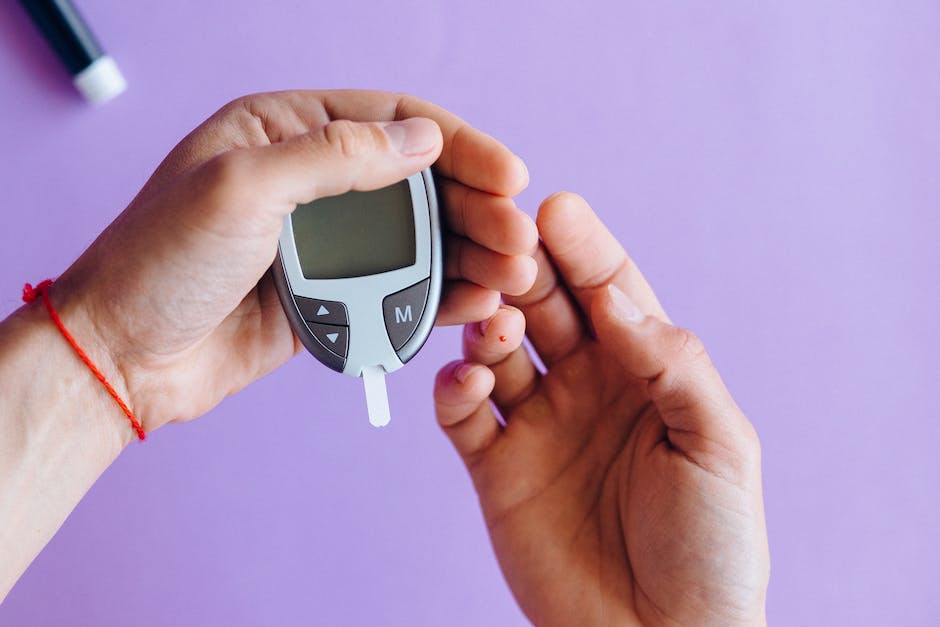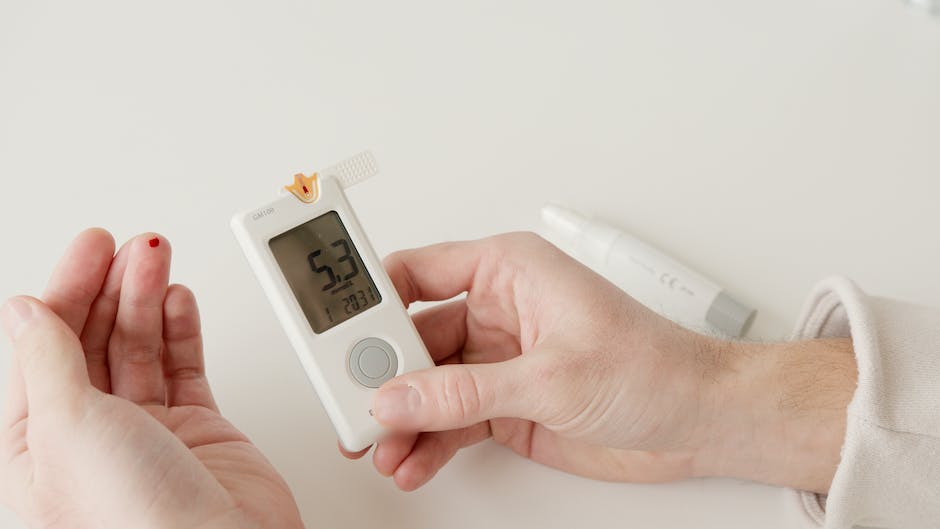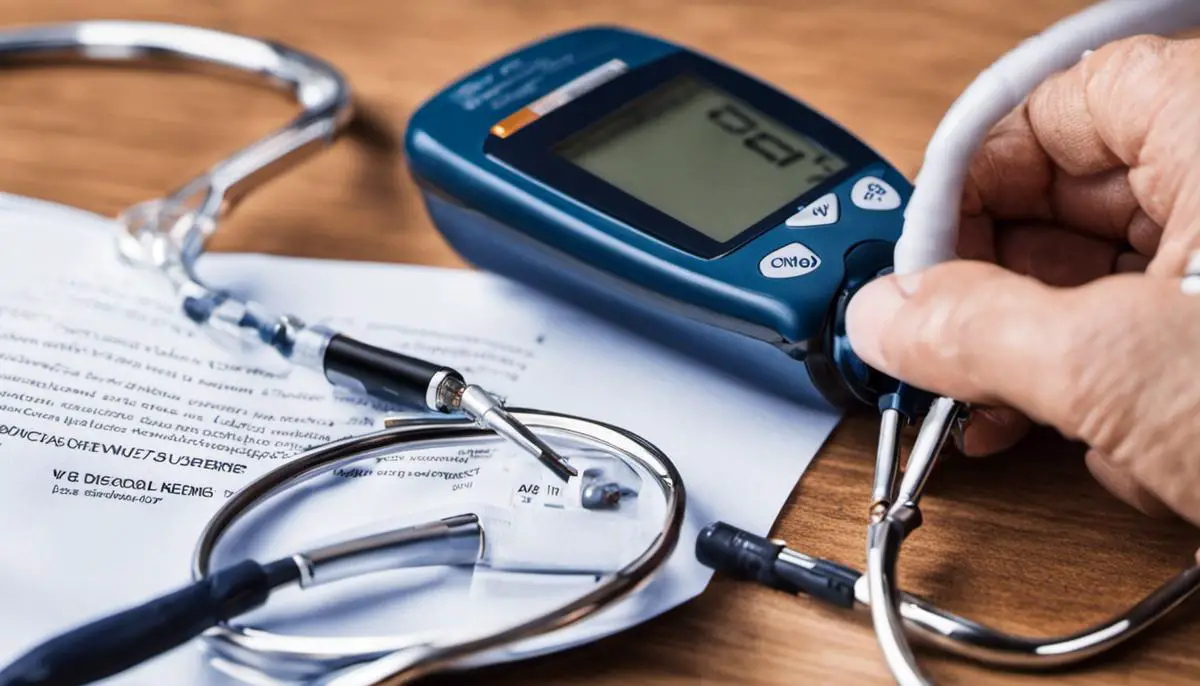Diabetic Ketoacidosis (DKA) is a serious medical complication often associated with type 1 diabetes but can happen in other types of diabetes as well. DKA is the result of insulin deficiency, where the body begins to break down fat at an alarming rate, leading to an excess of blood acids, or ketones. This condition can advance swiftly and become critical if not diagnosed and managed appropriately. It is thus essential for individuals, particularly those with diabetes, to understand the disease process, identify its symptoms, comprehend the necessary tests for its diagnosis, and be aware of the treatments available. Moreover, developing sound preventive strategies can significantly reduce the chances of developing DKA. In this piece, we delve into these important aspects surrounding DKA to equip you with essential knowledge and understanding.
Understanding DKA
Understanding Diabetic Ketoacidosis (DKA)
Diabetic Ketoacidosis, often referred to as DKA, is a serious complication that can occur in people with diabetes. Most commonly associated with type 1 diabetes, DKA can also surface amongst individuals with type 2 diabetes. This condition is marked by an excessive amount of ketones in the blood, leading to high acids levels.
The Physiology of DKA
Under normal circumstances, the body uses glucose as a main fuel source, facilitated by insulin—a hormone produced by the pancreas. In individuals with diabetes, insulin is either deficient or entirely absent. In response to this deficit, the body begins to break down fat as an alternative energy source, leading to the production of ketones. When these ketones accumulate in the blood faster than they can be eliminated by the body, it results in a condition known as ketosis. If left unchecked, it can further develop into ketoacidosis, a potentially life-threatening condition characterized by the highly acidic state of the blood.
The Root Cause: Insulin Deficiency
The onset of DKA is closely linked to an insulin deficiency. This generally occurs when the body cannot produce enough insulin, or when it is unable to use it effectively—conditions typical of both type 1 and type 2 diabetes. In type 1 diabetes, the immune system attacks and destroys insulin-producing cells in the pancreas. Without sufficient quantities of insulin, glucose cannot enter the cells and instead accumulates in the bloodstream. The body, starved of glucose, turns to fat for energy, kickstarting the process that could ultimately lead to DKA.
DM Types and Their Association with DKA
While DKA is more frequently linked to type 1 diabetes, it is not exclusive to it and can occur in patients with type 2 diabetes as well. Though individuals with type 1 diabetes are at a higher risk—given the absolute absence of insulin—those with type 2 diabetes also can develop DKA under certain conditions, particularly when they are under stress or have an acute illness.
Role of Insulin and Ketones
To understand DKA, it is important to recognize the role of both insulin and ketones in the body. Insulin regulates blood sugar levels by allowing glucose to enter cells. Without insulin, glucose stays in the bloodstream, leading to high blood sugar levels. On the other hand, ketones are produced when the body breaks down fat for energy. While small quantities of ketones can be perfectly normal—especially for those following a ketogenic diet—excessive ketones can lead to DKA.
Understanding Diabetic Ketoacidosis (DKA) Complications
Diabetic Ketoacidosis (DKA) is a severe complication of diabetes characterized by high levels of blood acids, or ketones. If undetected or not managed properly, DKA can lead to severe dehydration, coma, or even death. Therefore, it is crucial that people with diabetes regularly check their blood sugar and potentially their ketone levels to prevent DKA. Prompt detection, proper hydration and correct treatment are key strategies in managing this potentially fatal condition.

Recognizing the Symptoms of DKA
Identifying the Symptoms of Diabetic Ketoacidosis in Adults
It’s important to recognize the implications of DKA and how it can lead to a diabetic crisis if left untreated. The condition affects primarily individuals with type 1 diabetes, but it can also manifest in those with type 2 diabetes under certain circumstances. Knowing the symptoms and understanding the severity of DKA helps in its timely detection, enabling appropriate measures to treat it effectively.
Early Detection
One of the critical measures in avoiding complications from DKA is early detection. To effectively do this, it’s crucial to be familiar with the signs and symptoms associated with the condition. This knowledge can help you take prompt action and prevent a life-threatening situation.
Physical Symptoms
There are several physical symptoms associated with DKA. One of the most common is excessive thirst or polydipsia. If you notice you’re drinking and craving for fluids more than usual, it could be an indication of DKA. This excessive thirst is often accompanied by frequent urination, known as polyuria. As your body is unable to adequately process sugar due to insufficient insulin, your kidneys try to flush the excess glucose out of your body, hence you urinate more frequently.
Abdominal pain is also a possible symptom of DKA and is often accompanied by nausea or vomiting. This happens because when blood sugar levels are too high, the body is unable to use this glucose for energy and instead starts breaking down fats for fuel causing a build-up of ketones in the bloodstream. This accumulation of ketones may lead to abdominal discomfort.
A marked loss of appetite, often combined with unexpected weight loss, can illustrate the body’s inability to metabolize glucose effectively. A sustained loss of appetite or unexplained weight reduction should be considered a red flag and signal the need for immediate medical attention.
Lethargy and general weakness may also suggest the onset of DKA as the body does not have enough glucose to generate energy.
Mental symptoms of DKA include confusion or difficulty concentrating, often due to dehydration caused by excessive urination. If left unchecked, the person may experience fainting spells, a loss of consciousness, and in severe cases, may fall into a diabetic coma.
Other symptoms may include flushed, hot, dry skin, a rapid heart rate or pulse, and a distinctive fruity odor on the person’s breath, brought about by elevated ketone levels.
Importance of Prompt Intervention
Being aware of the symptoms of DKA and understanding their severity can make early detection possible. If you’re showing signs that may indicate DKA, seeking immediate medical attention is crucial. Quick action is essential since this condition can escalate rapidly and potentially lead to severe complications, or even death, if left untreated. Noticing these signs early on is a vital part of taking control of your health and well-being.

How is DKA Diagnosed
Grasping DKA: An Overview
DKA, short for Diabetic Ketoacidosis, is a severe condition normally seen in people with type 1 diabetes, although it can sometimes also occur in those with type 2 diabetes. It is triggered when your body can’t generate enough insulin, causing it to start burning fats as a source of energy. This process leads to the production of acids known as ketones. An excess of these ketones can result in a dangerous condition called ketonemia, which if left unadjusted, can precipitate metabolic acidosis and hence, the onset of DKA symptoms.
Physical Examinations for DKA
When it comes to diagnosing DKA, healthcare professionals usually begin with a physical examination. They may look out for symptoms typically associated with DKA, which include nausea and vomiting, rapid breathing, dry skin and mouth, flushed face, confusion and even coma in severe cases. Other possible indicators are fruity-smelling breath, a consequence of excessive ketones, and rapid loss of weight.
Lab Tests: Blood and Urine
Definitive diagnosis of DKA, however, is through blood and urine tests. Blood tests are used to measure glucose levels. If they are significantly elevated, usually above 250 milligrams per deciliter (mg/dL), it could indicate a state of hyperglycemia, a key signal of DKA.
Urine tests, meanwhile, are used to check for the presence of excess ketones. It’s here that lab tests unveil ketonemia. Specific strips change color when dipped in urine if ketones are present, confirming this condition as part of DKA.
In addition, a blood gas analysis might be conducted to assess the acidity of the blood. This helps identify if a person is in metabolic acidosis, another element of a DKA emergency.
Further Diagnostic Measures
Other than the standard blood and urine tests, additional assessments may include tests for potassium level, kidney function, and bicarbonate level, which shows how much your kidneys are compensating for the acid levels in your body.
An electrocardiogram (ECG) may be done to evaluate the patient’s heart rhythm, which might be affected from the low levels of electrolytes caused by DKA. Moreover, blood cultures or chest X-rays may be performed to check if an infection is the underlying cause of DKA.
Recognizing the importance of becoming well-informed about DKA (Diabetic Ketoacidosis) is crucial as this understanding allows for its timely detection and management, thus preventing severe health complications. Keep in mind, if you experience persistent high blood glucose levels or observe any symptoms of DKA, urgent medical attention is required.

Treatment of DKA
Deep Dive into DKA: A Serious Medical Urgency
Diabetic Ketoacidosis, commonly referred to as DKA, is a perilous health problem encountered by diabetic individuals. This life-threatening condition arises when the body fails to produce sufficient insulin which in turn leads to an excess accumulation of acidic compounds, known as ketones, in your bloodstream. If not attended and treated swiftly, extreme cases of DKA can propel a patient into a coma or even result in demise.
Initial Management: Fluid Replacement
The primary step in the treatment of DKA includes rehydrating the patient to restore the vascular volume. This is usually achieved using intravenous fluids like normal saline. Fluid replacement serves two purposes – correcting severe dehydration and reducing high blood glucose levels. As most patients with DKA have significant fluid loss due to frequent urination, replacement of these fluids can be crucial to stabilizing the patient’s condition.
Insulin Therapy: The Cornerstone of Treatment
Insulin is vital in treating DKA as it inhibits the process of fat breakdown in the body that leads to the production of ketone bodies. Regular insulin is often used, administered through an injection or an insulin pump until ketone bodies disappear from the urine. This therapy also helps in glucose utilization and stops further glucose production by the liver.
Electrolyte Replacement: Maintaining Body Balance
Due to frequent urination, vomiting, and the body’s own response to stress, electrolyte imbalances, particularly involving potassium, sodium, and phosphate, are common in DKA. Electrolytes play a vital role in the body’s metabolic processes. Monitoring and timely correction of these electrolytes can prevent complications such as cardiac arrhythmias.
Importance of Urgent Medical Care
Treatment for DKA should be administered promptly in a suitable healthcare setting, as delays can lead to further complications. Critical care units with trained staff and constant monitoring facilities are the most optimal choices.
Long-Term Disease Management: Preventing Recurrence
Avoiding future episodes of DKA is important after a person recovers from an acute attack. This is dependent on managing diabetes effectively through a combination of medication, nutritional guidance, regular physical activity, and self-monitoring of blood glucose levels.
Intensive Care Treatments
For severe cases, intensive care treatment may be required, which can include meticulous fluid and electrolyte replacement, insulin delivery, monitoring for complication development like kidney issues or adult respiratory distress syndrome, and organ support if necessary.
Understanding and Implementing Continuous Glucose Monitoring
Continuous glucose monitoring (CGM) has revolutionized the management of DKA in adults. It allows for real-time tracking of changes in blood glucose levels, and in the hands of a trained individual, can allow for early intervention measures when glucose levels start rising precipitously. It, therefore, aids in preventing the onset of severe DKA episodes.
DKA, or Diabetic Ketoacidosis, in adults is managed through a comprehensive strategy that encompasses fluid and electrolyte replenishment, insulin therapy, ongoing monitoring, and sustained disease control. The ultimate goal of this approach is not only to manage immediate episodes but also to prevent them from recurring in the future.

Preventing DKA
Grasping DKA
Diabetic Ketoacidosis, commonly referred to as DKA, is a severe medical condition that ensues among people living with diabetes when their bodies are deficient in insulin – the hormone that regulates blood sugar levels. To compensate for the lack of energy that glucose normally provides, the body embarks on breaking down fats, leading to the release of ketones – acidity-inducing chemicals- into the bloodstream. The build-up of these ketones can culminate in DKA, which could prove fatal if not addressed promptly and appropriately.
Preventing DKA through Regular Glucose Monitoring
To prevent DKA, the first step is regular blood glucose monitoring. Both adults with diabetes type 1 or 2 are advised to check their blood sugar at least twice a day, more if they are sick or under stress, as both these conditions can increase your blood sugar. This regular monitoring is crucial as it helps prevent blood sugar from reaching dangerously high levels that could contribute to the onset of DKA.
Proper Insulin Use
Another crucial strategy to prevent DKA is through proper insulin use. Missing or skipping an insulin dose, improper insulin storage, or using expired insulin can all lead to insufficient insulin levels, which can increase the risk of DKA. If you’re unsure about your insulin regimen, talking to your healthcare provider is advised. Those with diabetes must understand how to adjust their insulin intake during illness or when blood glucose is persistently high.
Adopting Healthy Lifestyle Modifications
Employing lifestyle modifications such as maintaining a balanced diet and staying active can also help in preventing DKA. A diet rich in vegetables, whole grains, lean proteins, and healthy fats can help manage your blood sugar levels. Regular physical activity, on the other hand, can make your body more sensitive to insulin and help manage blood sugar levels.
However, it’s important to monitor blood glucose before, during, and after exercise because physical activity can lower your blood sugar levels. If your glucose levels are too high or ketones are present, you should avoid exercise.
Importance of Diabetic Education and Regular Doctor Visits
Diabetes education or self-management education is a critical element in diabetes care. Attending diabetes education programs can equip you with the necessary skills and knowledge to understand and manage your disease better. This can significantly help in DKA prevention as it can promote a better understanding of when and how to take medications, interpret blood sugar levels, nutrition management, and the importance of regular exercise.
Regular visits to your doctor are also key to managing your diabetes. These appointments allow your healthcare team to check your A1C levels, which provides a two- to three-month average of your blood sugar levels. Regular visits also allow your doctor to adjust your treatment plan as necessary.
Managing Illness and Stress
When you’re sick, your body produces stress-related hormones that can increase your blood glucose levels, which may lead to DKA. Thus, it’s crucial to have a sick day plan in place if you have diabetes. This plan should include more frequent monitoring of your blood glucose and ketone levels, knowing what and when to eat, and how to adjust your medication.
Stress can also raise your glucose levels and insulin needs. Coping strategies such as deep breathing, yoga, meditation, or talking to a mental health professional may help manage stress levels. It’s important to discuss stress management techniques with your healthcare team to see which methods are suitable for you.
Closure
In conclusion, DKA is preventable through regular monitoring of blood glucose levels, proper insulin use, healthy lifestyle changes, diabetic education, regular doctor visits, and managing illness and stress. By taking these steps to manage your diabetes, you will significantly reduce your risk of developing DKA.

Indeed, DKA is a severe and potentially life-threatening condition. However, with effective self-care, routine medical care, and applying suitable prevention strategies, the risk of suffering an episode of DKA can be significantly reduced. Remember, recognizing the symptoms of DKA early and seeking immediate medical care is paramount to avoid complications. Regular monitoring of your blood sugar levels and correct management of your insulin regimen can help maintain balance. Furthermore, implementing necessary lifestyle modifications, such as adhering to a healthy diet and maintaining regular physical activity, are key prevention measures. Finally, continual education on diabetes management and the importance of taking additional care during instances like illness or stress can be exceptionally beneficial to prevent DKA. Stay informed, stay healthy, and take control of diabetes, so it doesn’t control you.
